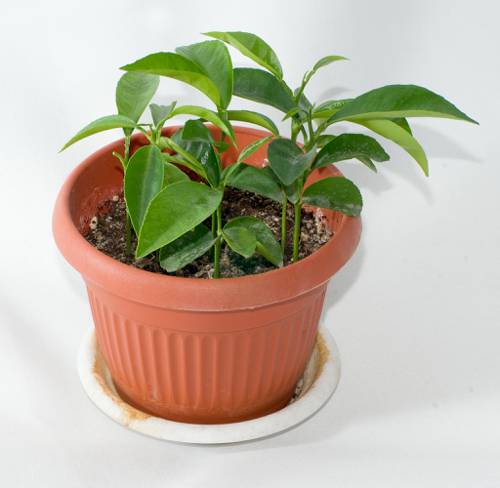
FAQ About Indoor Fruit-Bearing Plants

What types of fruit can be grown indoors?
Several varieties of fruit can be successfully grown indoors, including citrus fruits (like lemons, limes, and oranges), strawberries, figs, dwarf tomatoes, and certain types of berries such as raspberries and blueberries. These plants are well-suited for indoor environments due to their compact size and ability to thrive in containers.

How much light do indoor fruit plants need?
Most indoor fruit-bearing plants require a significant amount of light to thrive. Ideally, they need about 12 to 16 hours of bright, indirect sunlight per day. If natural lighting is insufficient, consider supplementing with grow lights to ensure the plants receive the necessary energy for fruit production.

Do indoor fruit plants require pollination?
Some indoor fruit plants do require pollination to produce fruit, while others are self-pollinating. For example, many citrus trees and tomatoes are self-pollinating, meaning they do not need additional pollination from insects or human intervention. However, other plants, such as blueberries, may require hand pollination or assistance from pollinators like bees. If growing indoors, manual pollination can be achieved using a small paintbrush to transfer pollen between flowers.

What is the best soil type for indoor fruit plants?
Indoor fruit plants generally perform best in well-draining potting soil. A mix that includes components like peat moss, perlite, and vermiculite is ideal for retaining moisture while also allowing excess water to drain away. It's important to ensure the soil retains nutrients and stays loose to promote healthy root growth.

How often should indoor fruit plants be watered?
The watering frequency for indoor fruit plants depends on the specific type of plant, container size, and environmental conditions like humidity and light. Generally, it's best to water the plants when the top inch of soil feels dry to the touch. Ensure proper drainage to prevent overwatering, which can cause root rot.

What kind of containers are suitable for indoor fruit plants?
Containers for indoor fruit plants should have sufficient depth to accommodate root growth, good drainage holes to prevent waterlogging, and be appropriately sized for the plant. Materials like plastic, ceramic, or terracotta pots are popular choices. Selecting the right container size is crucial: too small can restrict growth, and too large can cause moisture issues.

Can I grow a lemon tree indoors?
Yes, lemon trees can be grown indoors. Dwarf varieties such as the 'Meyer' lemon are particularly well-suited for indoor growth. They require plenty of bright, direct sunlight, ideally from a south-facing window, and should be grown in a well-draining potting mix. Regular feeding with citrus-specific fertilizer can also help maintain healthy growth and fruit production.

How can I boost the fruit production of my indoor plants?
Boosting fruit production in indoor plants involves ensuring optimal light exposure, maintaining the right balance of nutrients, and regular pruning. Providing consistent temperatures and humidity levels, along with ensuring proper pollination (if needed), can also enhance fruit yield.

What are common pests for indoor fruit plants and how can they be managed?
Common pests that affect indoor fruit plants include spider mites, aphids, and whiteflies. Regularly inspecting plants and using insecticidal soap or neem oil can help manage these pests. Maintaining good air circulation and avoiding overwatering also reduces the risk of infestations.

Do indoor fruit plants need fertilization?
Yes, indoor fruit plants benefit from regular fertilization to support growth and fruiting. Use a balanced, water-soluble fertilizer or one specifically formulated for fruit-bearing plants. Fertilize during the active growing season, usually every 4-6 weeks, while avoiding feeding during the dormant winter months.

What temperature range is ideal for growing fruit indoors?
Most indoor fruit plants thrive in a temperature range between 60°F and 75°F (15°C to 24°C). This range promotes healthy growth without stressing the plants. Avoid placing them near drafts, heaters, or air conditioners to prevent temperature fluctuations that can affect fruit development.

Can strawberries be grown indoors year-round?
Yes, strawberries can be grown indoors year-round if they are provided with adequate light, warmth, and water. Day-neutral varieties are especially suitable for indoor cultivation because they do not depend on specific daylight periods to set fruit.

What are the benefits of growing fruit indoors?
Growing fruit indoors offers several benefits, including the ability to control the growing environment, protection from outdoor pests and extreme weather, and access to fresh fruit regardless of the season. It also presents an opportunity to enjoy gardening even in urban settings with limited outdoor space.

How do I prune indoor fruit plants?
Pruning indoor fruit plants involves removing dead or diseased branches, as well as thinning out crowded growth to improve air circulation and light penetration. It's best done during the plant's dormant period or just before the growing season to encourage healthy development and fruit production.

Are dwarf fruit trees suitable for indoor growth?
Yes, dwarf fruit trees are ideal for indoor growth as they are specifically bred for compactness and can produce fruit without requiring as much space as full-sized trees. Examples include dwarf varieties of citrus, apples, and cherries, which can thrive indoors with proper care.

How can I ensure proper pollination for indoor fruit plants?
To ensure proper pollination for indoor fruit plants, consider hand pollination where needed. Use a small brush or cotton swab to transfer pollen from one flower to another. Ensure adequate airflow around the plants to facilitate natural pollination and, if possible, move plants outside when in bloom to allow access to bees and other pollinators.

What is the growth rate of indoor fruit plants?
The growth rate of indoor fruit plants varies by species and growing conditions. Generally, with proper care, you can expect visible growth within weeks. However, fruit production may take several months from planting, depending on the plant type, care, and environmental conditions.

How do I transplant indoor fruit plants to larger pots?
Transplant indoor fruit plants to larger pots by gently removing the plant from its current container, teasing out some of the root system, and placing it in a new pot with fresh potting mix. Ensure the new pot has adequate drainage. Water the plant thoroughly after transplanting to help it settle into its new environment.

What indoor conditions can stress fruit plants?
Indoor fruit plants can be stressed by various challenging conditions, including insufficient light, incorrect watering (over or under-watering), low humidity levels, and temperature fluctuations. Providing a stable environment with adequate light, warmth, and moisture can mitigate these stressors.

Can indoor fruit plants be moved outdoors?
Yes, indoor fruit plants can be moved outdoors during favorable weather conditions. Gradually acclimate them to the outdoor environment to avoid shock by initially placing them in shaded areas and then gradually increasing exposure to sunlight. This practice can help boost plant health and fruit production, but be mindful to bring them back indoors before temperatures drop significantly.
